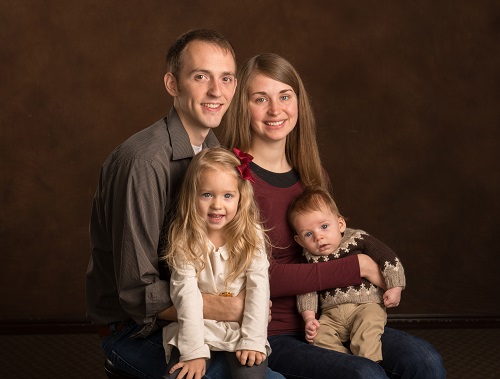
Jon Meyers, Ph.D.Ph.D. in Chemistry UNC-Chapel Hill, 2021 B.S., Chemistry, 2014 Brigham Young University - Idaho |

|
First Author


Nano Letters
Lead halide perovskites (LHPs) have shown remarkable promise for use in photovoltaics, photodetectors, light-emitting diodes, and lasers. Although solution-processed polycrystalline films are the most widely studied morphology, LHP nanowires (NWs) grown by vapor-phase processes offer the potential for precise control over crystallinity, phase, composition, and morphology. Here, we report the first demonstration of self-catalyzed vapor–liquid–solid (VLS) growth of lead halide (PbX2; X = Cl, Br, or I) NWs and conversion to LHP. We present a kinetic model of the PbX2 NW growth process in which a liquid Pb catalyst is supersaturated with halogen X through vapor-phase incorporation of both Pb and X, inducing growth of a NW. For PbI2, we show that the NWs are single-crystalline, oriented in the ⟨1̅21̅0⟩ direction, and composed of a stoichiometric PbI2 shaft with a spherical Pb tip. Low-temperature vapor-phase intercalation of methylammonium iodide converts the NWs to methylammonium lead iodide (MAPbI3) perovskite while maintaining the NW morphology. Single-NW experiments comparing measured extinction spectra with optical simulations show that the NWs exhibit a strong optical antenna effect, leading to substantially enhanced scattering efficiencies and to absorption efficiencies that can be more than twice that of thin films of the same thickness. Further development of the self-catalyzed VLS mechanism for lead halide and perovskite NWs should enable the rational design of nanostructures for various optoelectronic technologies, including potentially unique applications such as hot-carrier solar cells.